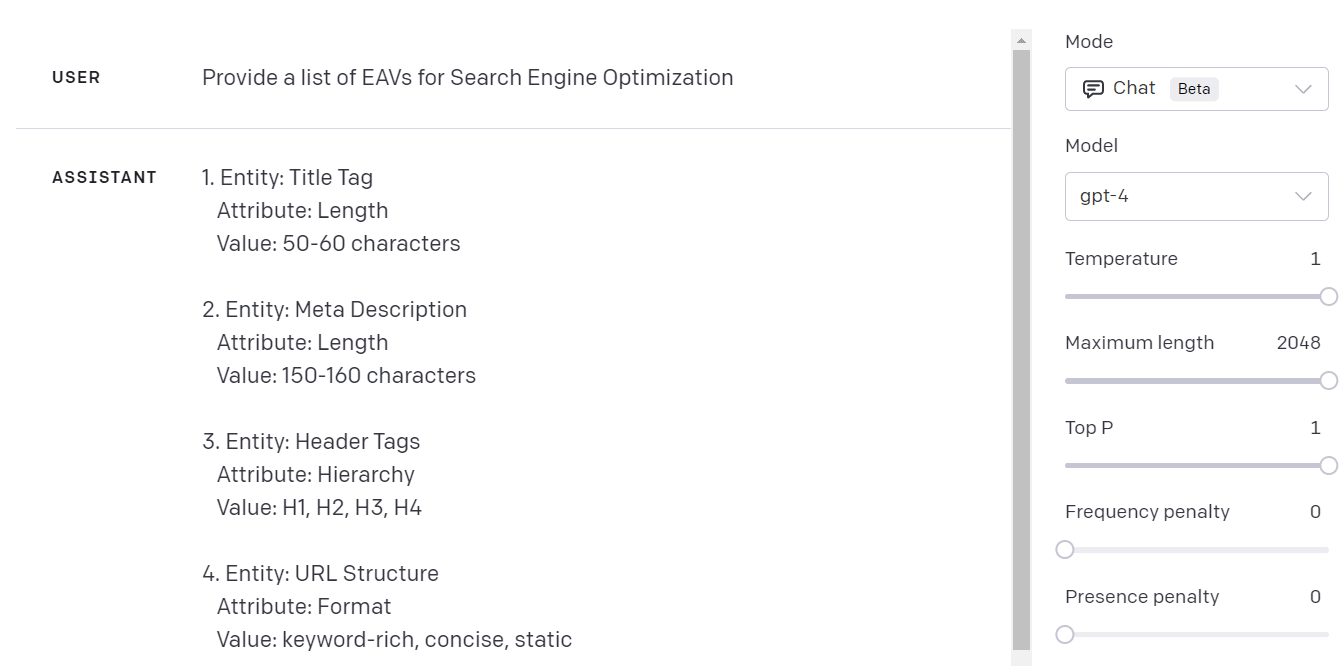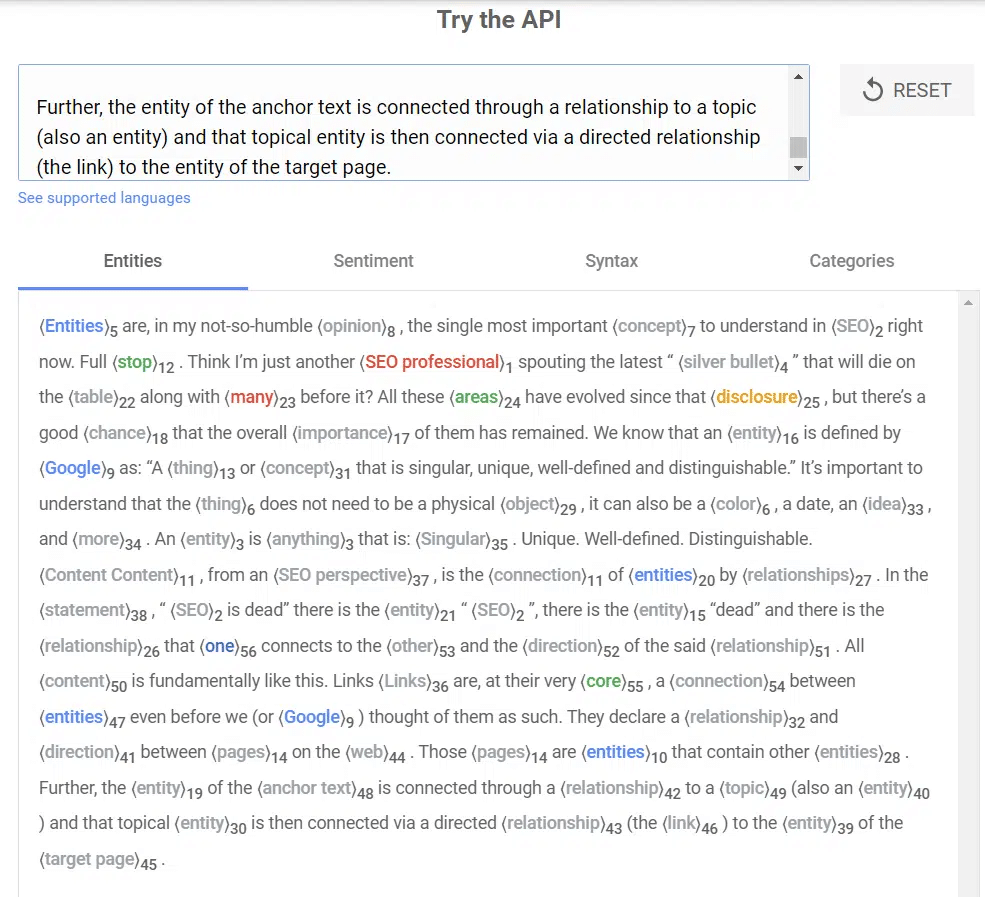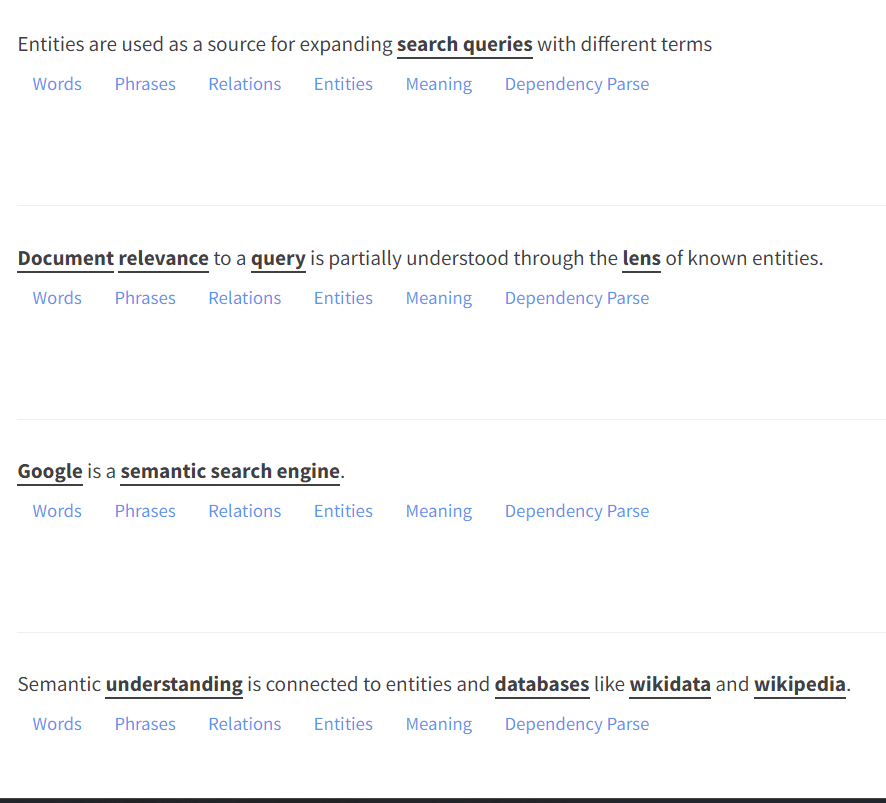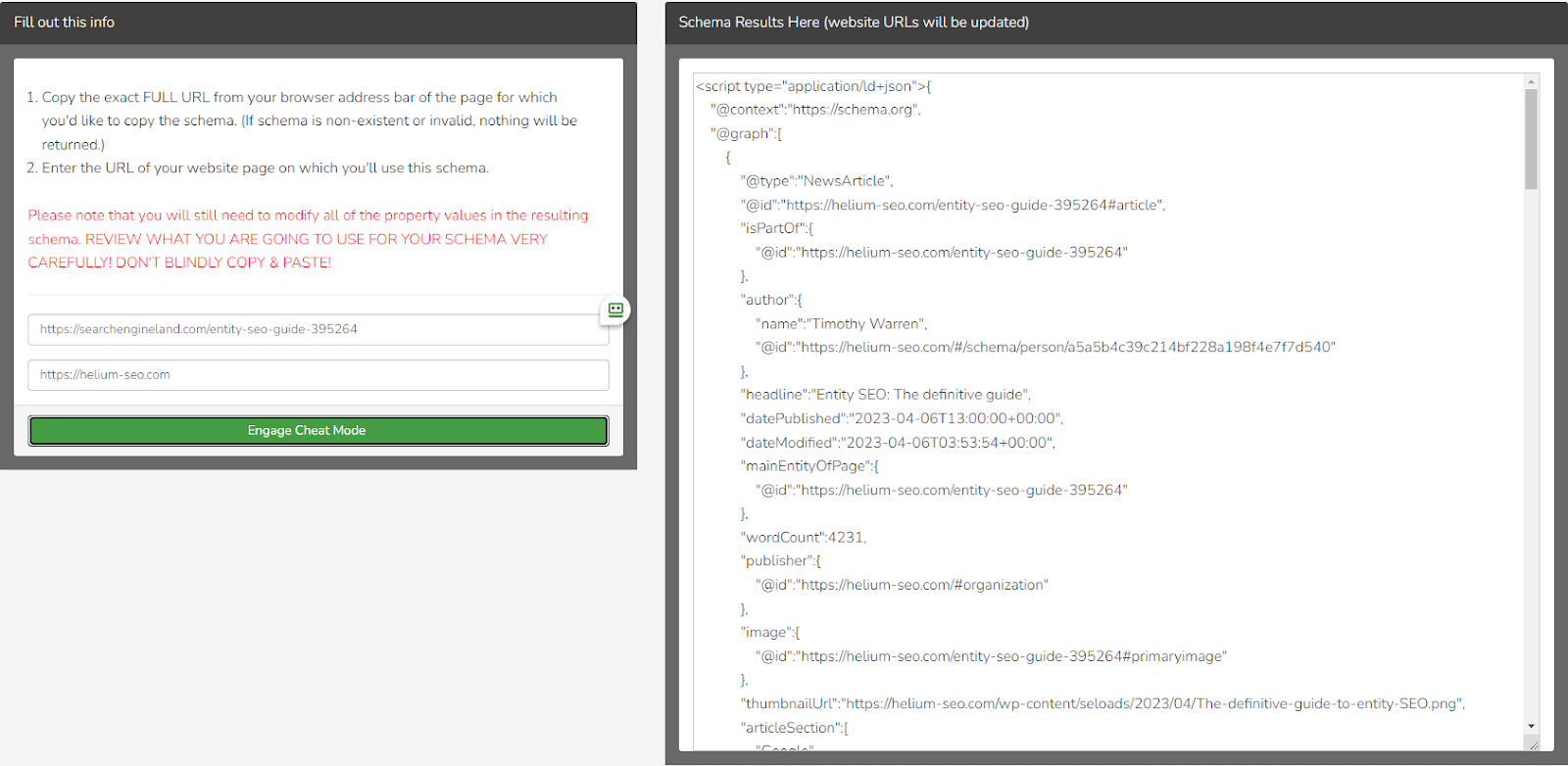An entity is a uniquely identifiable object or thing characterized by its name(s), type(s), attributes, and relationships to other entities. An entity is only considered to exist when it exists in an entity catalog. I used this definition in my entity SEO article.
The first part of this entity SEO series should be used when you need to justify a tactic associated with optimizing for an entity.
TL;DR from Part 1:
- Entities are used as a source for expanding search queries with different terms.
- Document relevance to a query is partially understood through the lens of known entities.
- Google is a semantic search engine. Semantic understanding is connected to entities and databases like Wikidata and Wikipedia.
- Wikipedia and Wikidata are the most beginner-friendly sources of knowledge on the kind of information you should write about as you optimize for entities. Look at the hyperlinks, the table of contents, the sourcing, etc.
- Entity understanding is impacted by documents on the web. Google’s understanding changes frequently, and algorithm updates are known moments in time when this updated understanding is applied.
- Three data structures exist on the web: unstructured (blogs), semi-structured (Wikipedia), and structured data (Wikidata and JSON schema).
- Optimize around search intent when attempting to cover a topic.
- Speed of publishing, the number of articles published, and the depth of the articles you publish are the three primary levers you can pull as an SEO focused on entities.
This article will dive right into the actionable advice. We will go over page structure, site structure, important schemas to use and tools that can help you.
Getting started with entity optimization
Every page and every collection of pages has a context. Pages don’t exist in a vacuum.
Why does it exist?
Let’s use Nike as our example. Nike sells shoes. Their website exists to sell running shoes.
How do you figure out the primary entity associated with selling running shoes?
It’s tempting to just say “shoes” or “running shoes,” but that wouldn’t be the best answer.
The best answer requires further abstraction.
Optimizing entities is largely a task meant for our brains, so let’s go through some options.
Running
- Shoes
- Running shoes
- Exercise
- Sneakers
- Sports
- Tennis shoes
- Athletics
- Athleisure
So what types of intent exist for Nike?
Necessary gear for sports, exercise empowerment, shopping guides for each specific shoe type.
You can expand this further, but the goal is to provide an oversimplified example. If I had to guess, I’d say that the primary search intent is about sports.
While Nike has evolved into a style, the core purpose of Nike and the core intent for searchers is all about sports equipment.
If we ask the “why” question for sports, we could go a step further and say “personal development” or “lifestyle improvement” is the primary search intent.
It’s up to the SEO to figure out the best choices because the entire optimization process is contingent upon:
- The search intent.
- The context of the website.
- The primary entity associated with that context.
If you’d like to dig deeper into this idea, I recommend Koray Tuğberk GÜBÜR’s Topical Authority course (be warned, it’s complicated and designed for a skilled SEO audience).
This realm of SEO has its own vocabulary, and GÜBÜR has spent countless hours extracting terms and formalizing the concepts associated with this area.
Some important terms you’ll want to familiarize yourself with if you’re interested in entities and semantic search:
- Topic coverage
- Responsiveness
- Query processing
- Semantic distance
- Contextual flow
- Contextual bridge
What are the core concepts associated with entity optimization?
The core concepts associated with entity optimization focus on entity attribute values (EAV), information dilution, language usage, site organization and page organization.
Entity attribute values and Amazon
When optimizing around entities, you'll want to focus on the attributes that are associated with your entity.
Remember that the context can change the attributes that are most important to use.
We use OpenAI and a simple prompt to get a list of attributes. You can get creative with it, but use the image as your starting point.

Amazon's plethora of information on each product is a great example of entity optimization. They have videos, images, multiple angles, buyer guides, reviews, tags, and detailed technical information on their products.
Do you need to be worth a trillion dollars to achieve this depth of attribute information? No.
If you are selling products of any kind, more scientific and data-centric information will help achieve the attribute depth and width required for entity optimization.
Information dilution and disambiguation
Are you writing about SEO for lawyers? How do you connect two entirely distinct entities without diluting Google's understanding?
Do you target lifestyle, technology, business, and health on one website?
Have you properly covered each distinct category and made the necessary connections to assist Google’s understanding of your content?
You'll fail to optimize for entities if you don’t provide adequate context.
For disambiguation, we like to use Google NLP.

This is an example from Google. Input your text and review the score.
Oftentimes, a few word changes and a small tweak to how you order your sentences are all it takes to drastically improve.
The lesson here is to remember that writers are providing information and it's important to know your audience when writing.
You can provide helpful content to humans while providing a structure for AI to digest and understand. Content for humans and for robots is a needless bifurcation that largely exists due to SEO practitioners lacking knowledge in this area.
The importance of language
Focus on the way you use language. The book “Entity-Oriented Search” provides almost 400 pages of deep insights into entities.
The author, Krisztian Balog, reveals that the subjects, objects, and predicates are all used in order to understand a website and each of its documents (pages/posts).
You must have your core topic on every page if you are Nike. Exercise, fitness, or shoes could all be options here. The actions and attributes associated with your core topic should also be present throughout your website.
This doesn’t mean you need to say the same thing repeatedly because the context of an attribute or an action can change (i.e., exercising by running in the rain, exercising by sprinting, exercising on an outdoor track, etc.).
Logical site structure, page structure and schema
Google’s Lizzi Sassman recently shared how they prefer to digest schemas. Google wants sites to nest their schema.
Use the dropshipping outline as an example. Context isn’t just about the content, it's about the way you connect the content.
Examples of page structure (you’ll learn how you can replicate this with schema later)
- Dropshipping
- Low barrier to entry leading to high competition
- Difficulty in finding unique products
- Long delivery times leading to poor customer experience
- Digital marketing agency
- High demand for quality digital marketing services
- Potential to scale up to $1 million or more in revenue
- Difficulty in scaling beyond a certain point
- Brick-and-mortar business
- Easy to advertise locally using Facebook and Instagram
- Operational challenges and significant startup costs
- Difficult to scale and often generate small profits
- Online coach/consultant
- High demand for coaching and consulting services
- Ability to work remotely and set your own schedule
- Difficulty in scaling due to time limitations
- Software as a Service (SaaS) Business
- Huge potential rewards if successful
- High risk and significant upfront investment
- Difficulty in developing a winning product
- Ecommerce and Amazon FBA
- High demand for online products and scalable business model
- Challenges in differentiating from competition
- Amazon FBA's fees and lack of control over pricing
If you're looking for a great example of what an entity-optimized blog architecture looks like, then I highly suggest that you review Docusaurus, a CMS of sorts, which handles content structure well.
Look at any of their showcases, and you’ll see a hierarchy of information presented on the left.
You will get a top-down view of the cluster. The articles have a table of contents, so you get a top-down organizational structure for each article.
The only additional thing to do is optimize the article's internal link structure.
Using Wikipedia to jumpstart your entity-focused SEO campaign
Wikipedia is a semi-structured knowledge base that Google heavily uses in its quest to understand and use entities.
Because we know what it is and how Google uses it in its systems, we can use a Wikipedia page to grow our understanding of entities and semantic search.

Case in point: the Wikipedia page for “sneakers.” Below are key elements to note:
- The table of contents demonstrates solid topic coverage designed to approximate all we need to know about the topic (sneakers).
- The first sentence of the page is packed with brief and clear information directly related to sneakers. The sentence provides synonyms and disambiguates the subject.
- The internal links use anchor text that signals which page should rank for the term, and it demonstrates strong connections with the semantically close subjects.

- The See also section is an example of creating content designed to cover the topic.
- The References section is an external validator that shares where you can find more trusted sources of info. Ideally, these should be authority sites that don't compete with you. This section is a great support for digital PR. Conducting studies that help the industry is exactly how you get referenced.

- The bottom of the Wikipedia page shows a hierarchy. While it is not picking out the exact entity or search intent for your brand, it's helpful to see that this page provides multiple formats for the content presentation, numerous connection points to internal pages of relevance, and multiple hierarchies. If you count Wikidata, you even have a schema version of this information.
After analyzing hundreds of Wikipedia pages, we created an entity template that can be used as a quick reference when writing.
Generally, the most common entities are associated with brands, people, sports, activities, products, geographies, events, temporal, emotions, ideas, animals, fields of study, food, and music or film.

No one has the full list of entities, but I shared a list of 150+ types of entities in the previous article.
It’s important to note that you should not expect to rank by just copying everything on a Wikipedia page. The example of Wikipedia is meant to provide context for understanding.
Ask yourself how your specific website context connects with your main entity. Think about the types of search intent that exist.
AI is very helpful in giving you a headstart with this. Ask GPT-4 to “provide a list of likely search intents for someone searching Google for [running shoes]," and you’ll get a list of ideas.

This might not be perfect, but it’s a great way to identify search intent and grease the wheels for thinking through this on your own.
Handy tool for generating 1,000-2,000 topics
While AI is the focus of the next article in this series, this particular use case of AI is incredibly helpful for topic maps built to cover an entity.
With the ContentSprout topic generator, you enter the niche (e.g., “golf”) and get categories, sub-categories, and clusters.

The final piece provides a list of topics to write about inside the cluster.

AI helps reduce the time it takes to do a lot of SEO tasks related to entity optimization. Invest in AI tools, and it will pay off.
Now that we've covered the topic of targeting, it's time to dig into identifying entities.
Identifying entities in text
Let’s use the TL;DR section above as the input text we will analyze. Open up textrazor.com/demo and paste the text into the box.
When you run the analysis, you’ll see a helpful collection of insights about the text you provided.

If you hover over an underlined word, you get some sweet info that can be used for your schema or for your analysis of your topic.

You get a Wikipedia link, the Freebase ID (a structured knowledge graph), and a Wikidata ID (like Freebase, but better). You also get a list of scores and entity types.

The right side of the screen provides the identified topics.
Remember that this isn't Google, but it's attempting to do something similar to what Google is doing, which makes this tool useful.
I can now see many scores connected to topics, organized by the strength of the topic understanding.
Using schema to connect the dots for Google
Schema has become mainstream in SEO communities, but that doesn’t mean people use schema to the fullest. Most people stick with a generic schema and avoid anything custom.
While this article isn’t designed to provide a crash course on schema, it is important to share the two underutilized schemas that help connect the dots for Google.
Mentions schema
By using mentions schema, you're declaring that your page mentions a specific thing. You can then tie in a Wikipedia page and connect that declaration.
Why is this helpful?
You are disambiguating information and providing important information in the easiest format for Googlebot. Don’t sleep on mentions schema.

In the image above, you can see a ContentSprout test website on fishing.
The main entity of the page is declared, a description is provided, mention is used, and SameAs is incorporated.
These pieces send an abundantly clear message to Googlebot so it understands your content.
If you’d like to visualize the schema, we suggest Schema Zone. We plugged in a URL containing a custom schema, which is what it looks like.

If you’ve ever used Sitebulb or Screaming Frog, you’ll recognize that this is essentially a schema version of what those tools do with internal links.
We all try to get our visuals to look like this, but did you know you could replicate that structure in schema?
Schema Zone has a few other features, but our favorite is the competitor schema stealer.

Using competitors as your starting point is always easier, and this tool is designed to do exactly that.
A new company called Entity Clouds released a programmatic schema solution that has blown us away. According to its founder Cory Hubbe:
“Entity Clouds is a programmatic entity optimization tool set that leverages the science of bot crawl patterns and classification systems to give search engines precisely what they want. We use internet database classification systems and structured data as our foundation, strengthening the association between your business and relative, authoritative entities.”
It won’t give you cool visuals, but it gives similar results, and you install it with GTM or a WordPress plugin.
Optimizing for entities
As we learned in the first article, Entity SEO: The definitive guide, entities are the future of SEO.
They help Google understand your content and its relevance to keyword searches.
Optimizing for entities will help your content perform better in search engines.
Your website is much more likely to continue to rank through algorithm changes as Google and Bing continually improve their understanding of the web and the vast amounts of content on it.
The post How to optimize for entities appeared first on Search Engine Land.
via Search Engine Land https://ift.tt/Xpeq8Qb

No comments:
Post a Comment